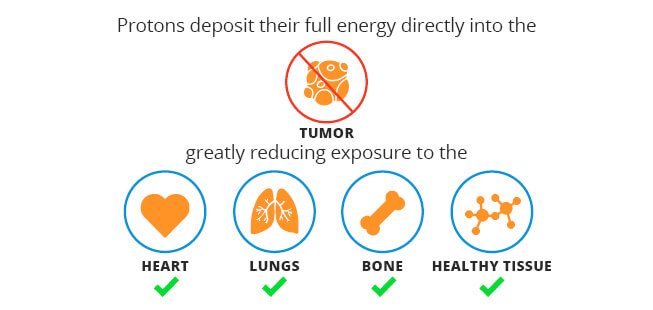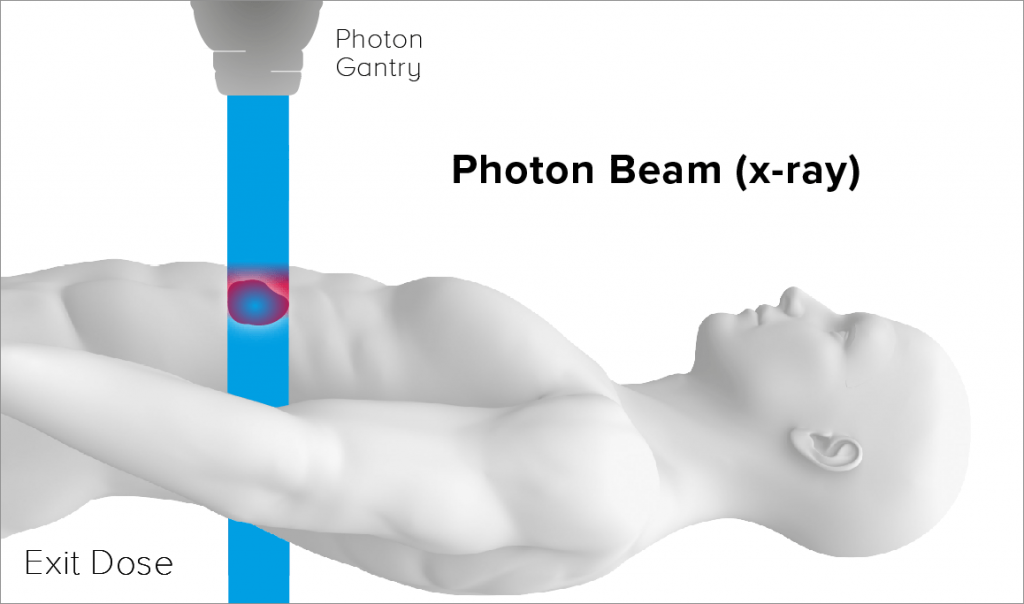


Proton therapy is a powerful, practical, proven and non-invasive cancer-fighting tool that is growing across the United States and around the world. It was first used to treat patients in 1954, and received FDA approval in 1988. Unlike traditional radiation which uses photons, or x-rays, protons can deliver nearly all of their energy within a tumor. This protects healthy tissue and sensitive organs, resulting in few to no side effects. Proton therapy also offers patients a higher quality of life during and after treatment. Due to these advantages, proton therapy has become a preferred treatment option for patients with cancerous tumors, especially those in sensitive locations such as near the brain, spine, heart and eye.
The advantage of proton therapy comes from a phenomenon known as the Bragg Peak. Unlike photons, protons can be charged to reach the exact depth where a tumor is located, then stop. Virtually no proton radiation continues past the tumor site.
In recent years, proton therapy equipment advances have made proton therapy a growing, powerful, practical and proven cancer-fighting tool. Today, common proton therapy treatment areas include:
- Bladder
- Brain
- Breast
- Craniospinal
- Eye
- Gastrointestinal
- Genitourinary
- Gynecological
- Head and neck
- Intracranial
- Liver
- Lung
- Lymphoma
- Pancreatic
- Pediatric Patients
- Prostate


